Forces
Student Lesson
The overall design of submarines involves a careful balance of these forces and principles to achieve effective propulsion, control, and submersion. Engineers consider the buoyancy requirements, hydrodynamic properties, and the integration of various systems to ensure the submarine’s safety and functionality in different underwater conditions.
Term – Definition
Buoyancy
:tendency of an object to float or to rise in a fluid when submerged.
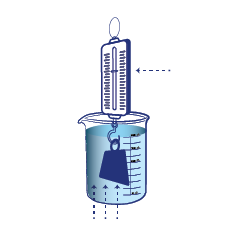
Why it’s used in Submarines
Buoyancy is the upward force exerted by a fluid (in this case, water) that opposes the weight of an immersed object (the submarine). Submarines are designed to be buoyant, allowing them to float at the water’s surface or at a specific depth. By controlling buoyancy, subma- rines can submerge or surface.
Principle Used: Archimedes’ Principle
Term – Definition
Gravity
:the universal force of attraction acting between
all matter.
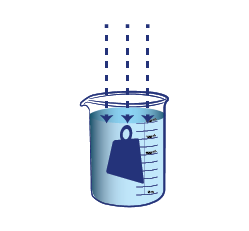
Why it’s used in Submarines
As a submarine moves through water, it experiences resistance due to the water’s viscosity. This resistance is an opposing force that the submarine’s propulsion system must overcome.
Principle Used: Principles of fluid dynamics, including drag force equations.
Term – Definition
Propulsion
:the action of driving or pushing forward.
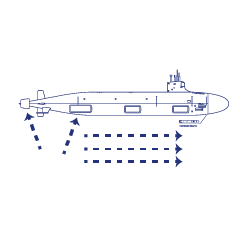
Why it’s used in Submarines
Submarines use propulsion systems, often powered by electric or diesel-electric engines, to generate forward thrust. The propulsion system must overcome hydrodynamic resistance to move the submarine through the water.
Principle Used: Newton’s Third Law of Motion
Term – Definition
Hydrodynamic Resistance
:the extra resistance induced
by a particle as it flows
through a
microfluidic channel.
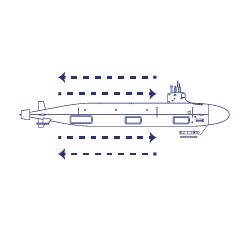
Why it’s used in Submarines
As a submarine moves through water, it experiences resistance due to the water’s viscosity. This resistance is an opposing force that the submarine’s propulsion system must overcome.
Principle Used: Principles of fluid dynamics, including drag force equations.
Term – Definition
Control Surfaces
:also known as hydroplanes, are control surfaces found on a submarine which allow the vessel to submerge, surface, and controls depth when submerged.
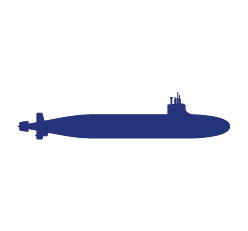
Why it’s used in Submarines
Submarines have control surfaces, such as fins and rudders, that are used to control their orientation and depth. By adjusting these surfaces, a submarine can ascend, descend, and maintain stability.
Principle Used: Principles of aerodynamics & hydrodynamics in the design of control surfaces for stability and maneuverability.
Term – Definition
Ballast Tanks
:are used to control the buoyancy of the vessel by filling the tanks with water
or air.
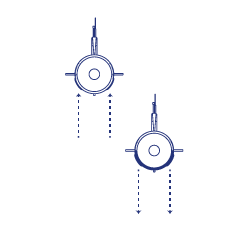
Why it’s used in Submarines
Submarines are equipped with ballast tanks that can be filled with water or emptied of water to control buoyancy. When the tanks are filled, the submarine becomes denser and sinks; when emptied, it becomes less dense and rises.
Principle Used: Archimedes’ Principle

